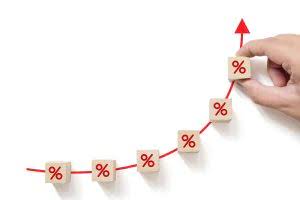
Be mindful of seasonality and how temporarily fluctuations in account balances may impact month-over-month ratio calculations. Then, a company analyzes how the ratio has changed over time (whether it is improving, the rate at which it is changing, and whether the company wanted the ratio to change over time). Therefore, in conjunction with the quick ratio, the inventory turnover, accounts receivable and accounts payable turnover will give us a more precise account of the business.
For such reason, the Quick Ratio is going to tell us a lot about the business. On the other hand, when analyzing a manufacturing company, the efficiency ratios may tell us much more about the business. This means that 80% of the company’s assets have been financed through debt. If we go back to the coffee shop example, the debt to equity ratio of 4 is ok if all the other coffee shops in the neighborhood operate with the same level of risk. The solvency ratios also called leverage ratios help to assess the short and long-term capability of an organization to meet its obligations. This is the relationship between net income and shareholder equity or, the amount of revenue generated by the shareholder’s investment in the organization.
Guide to Financial Ratios
There are four types of financial ratios, each of which tells a different part of a company’s financial story. Say a company has $500,000 in net sales and $50,000 in average total assets. Their asset turnover ratio is 10, meaning every dollar in assets generates $10 in sales. A company’s debt ratio measures the relationship between its debts and its assets. For instance, you might use a debt ratio to gauge whether a company could pay off its debts with the assets it has currently.
A high-profit margin relative to the industry may indicate a significant advantage in economies of scale, or, potentially, some accounting schemes that may not be sustainable for the long term. A company with a very low profit margin may need to focus on decreasing expenses through wide-scale strategic initiatives. With net profit how would you characterize financial ratios margin, there can be a few red flags you should watch out for. For instance, a company that has decreasing profit margins year-over-year could be dealing with changing market conditions, increasing competition, or rising costs. Essentially, profitability analysis seeks to determine whether a company will make a profit.
Types of financial ratios
Another way to look at the return on assets is in the context of the Dupont method of financial analysis. This method of analysis shows you how to look at the return on assets in the context of both the net profit margin and the total asset turnover ratio. It represents a company’s ability to pay current liabilities with assets that can be converted to cash quickly.

Suppose that we are examining the financial statements of the fictitious publicly listed retailer The Outlet to evaluate its financial position. To do this, we review the company’s annual report, which can often be downloaded from a company’s website. The standard format for the balance sheet is assets, followed by liabilities, then shareholder equity. The D/E ratio is used to analyze a company’s financial leverage, or how a company is using its debt to finance its operations and assets. Operating cash flow can tell you how much cash flow a business generates in a given time frame.
Financial Ratios: How to Calculate and Analyze
You can see that their sales took quite a jump but their cost of goods sold rose. Bear in mind, the company can still have problems even if this is the case. But, if the receivables turnover is way above the industry’s, then the firm’s credit policy may be too restrictive. We would really need to know what type of industry this firm is in and get some industry data to compare to. The higher the ROE, the better the company is at generating profits using shareholder equity. Financial ratios are a great way to gain an understanding of a company’s potential for success.

A ratio above 1 means the value of a company’s current assets is more than its current liabilities. A number less than 1, on the other hand, means that liabilities outweigh assets. For the company, this could point towards financial issues with creditors, growth, or production, and could ultimately lead to bankruptcy. The gross profit margin ratio is a key indicator for how much profit a company makes from what it sells, given the cost of making their product.
